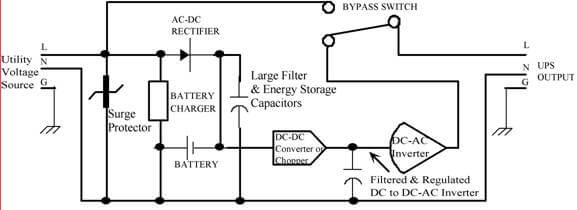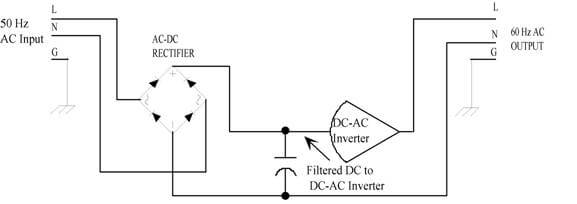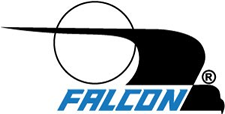The Development of Power Standards in the United States and Europe
Direct current (DC) power has dictated device design in the United States and Canada since the late 1800s when Thomas Edison developed the incandescent light bulb, which operated from a 110 volt DC source. The primary drawback to DC power was that it could only be distributed over short distances without having to be regenerated. In the early 1900s when Nicoli Tesla was working for Westinghouse, he and Westinghouse found a solution to this problem by developing the first alternating current (AC) generating systems. These systems were advanced over Edison’s DC system, facilitating the transmission of AC power over very long distances. Tesla determined AC power alternating at 60 cycles per second (60 Hertz) to be the most efficient; therefore the Westinghouse systems generated 60Hz AC power. Tesla further believed that 220 volts was the preferred voltage. Due to Edison’s large investment in DC power, he attempted to thwart the advancement of AC power. Edison campaigned that it was unsafe, especially at 220 volts. To win governmental approval, Westinghouse conceded to Edison’s 110 volt standard. Therefore, 110 volts, 60Hz became the early standard for the United States and Canada. Today, the standard single-phase voltages are 120, 208 or 240 volts, with 120 volts at 60Hz found in the wall outlet of homes and offices across North America.
Shortly after Tesla’s pioneering work in AC power systems, the AEG Company located in Germany developed its own AC power systems. They originally adopted the 110 voltage, but decided to generate the power at 50Hz because the number “60” did not fit the metric standard. They later decided on a 220 volt standard as they discovered it was more efficient. Since AEG was a large monopoly, their standards quickly spread throughout Europe, with the exception of Britain which did not adopt the European standards until the end of World War II. Today the standard single-phase voltages found in the wall outlet of homes and offices in Europe are 220 or 230 volts at 50Hz.
Why Do You Need a Frequency Converter?
Power systems throughout the world today are based on either the U.S. or European frequency standards. The differing voltages and frequencies can pose real problems for those wanting to operate equipment designed for one power environment in another. For example, voltage conversion may be required for some equipment designed for domestic 120 volt, 60Hz power to Europe’s 230 volt, 50Hz power. Other types of equipment may demand both voltage and frequency conversion.
To illustrate this point, Frankfort Electrical Services, an engineering firm specializing in solutions to electrical complexities such as frequency and voltage conversion for government, DOD, and other government-related firms, was presented a challenge. The firm was approached by a local government agency that tests material and liquid samples for classified projects. The agency had recently purchased an upgraded chemical analyzer from a European manufacturer. This vacuum centrifuge analyzer was the only unit meeting the agency’s rigorous demands for leading edge technological features such as CPU-based analysis with pre-programmed test methodologies/algorithms to speed up test results and lower operating costs. Though some 230VAC/50Hz equipment will perform if fed 220-240V/60Hz (U.S.) power, this analyzer would not operate on 60Hz power, due mostly to the delicate motor drives and other sub-components that require a precise, rock-solid, regulated 230VAC 50Hz input. In addition to needing precise voltage conversion, it also required uninterruptible power to ensure the lab results were accurate. After researching several frequency converters and power sources, Frankfort Electrical selected an on-line, double conversion Uninterruptible Power Supply (UPS) from Falcon Electric. The SG 6kVA UPS supplied advanced frequency conversion, precision voltage regulation, along with battery backup. Upon a power outage, the Falcon unit provided clean uninterrupted power to the connected lab equipment and a no-break transfer to an onsite generator. Utilizing microprocessor technology, the UPS was able to communicate with power management software to support unattended shutdown, data logging, and self-diagnostics. Remote management and monitoring of the equipment was made possible via standard RS-232 port, or an optional TCP-IP addressable SNMP/HTTP board with a standard 1-BaseT Ethernet port. “These features together with its small size, affordable price and quick shipment definitely made the SG unit the ideal solution for my customer,” commented Frankfort Electrical owner, Jerry Franz. (fig. 1)

(Fig. 1) The On-line UPS diagram above details its unique design. The true advantage of the On-line UPS is its ability to provide an electrical firewall between the incoming utility power and your sensitive electronic equipment. Incoming AC power is rectified to DC, regulated and clean new AC output power is generated.
In some cases, AC voltage conversion is a fairly simple matter of purchasing an adequately sized transformer to step up or down the voltage as required. Many devices and equipment, including those incorporating AC motors, and lightning ballasts, require more than voltage conversion. Because equipment is designed to operate from a specified AC frequency, such as the specialized centrifuge analyzer, failure to power up equipment on the specified frequency can damage sensitive sub-components and render the device inoperable.
What is a Frequency Converter?
A frequency converter is either a motor/generator or electronic device that accepts AC power at one frequency and regenerates AC power at a differing frequency. (fig 2)

(Fig. 2) The Frequency Converter diagram above shows a typical design where the incoming AC at a specific frequency is rectified to a Direct Current (DC). The DC is then fed to a Pulse Width Modulated (PWM) Inverter stage where sinewave AC power is created at the desired output frequency.
Motor/generator (MG set) frequency converters are primarily designed for large fixed applications such as aircraft ground power or large equipment designed for use in another country. Due to their size and weight, they are a poor choice for portable applications. Electronic frequency converters consist purely of electronic circuitry. They take the incoming AC power, convert it to DC, filter it and regenerate new AC power at the desired frequency. The converters range in size from low cost, small portable units up to large models for fixed installations. Their output voltage and frequency regulation is typically superior to the motor/generator types. Most products range in size from 1-6kVA and are ideal for portable and small fixed applications. Typical applications include 400Hz power sources for small avionics and military labs, and 50Hz or 60Hz sources for powering frequency sensitive computers, networks, telecommunications, satellites and radio equipment. For applications requiring both conversion and on-line power protection, there are a select few true on-line models which provide three-phase to single-phase conversion, 50/60 and 400Hz frequency conversion, voltage conversion and optional battery backup capability for a complete power solution.
When choosing a frequency converter, understanding the equipment’s requirements and capabilities is key to finding the right fit. If the equipment is required to perform in an international environment, weigh the cost of the converter against the cost of replacing the equipment to be powered. Care must be taken to assure it is sized properly to meet the power demand of the connected load(s). Over-sizing the converter a bit is always a good practice. If selecting a low-cost converter, verify it has a true sinewave output with less than 5% Total Harmonic Distortion (THD). Never use a converter with a quasi-sinewave, step-wave, square-wave or modified-sinewave output.
Engineering Department
Falcon Electric, Inc.
